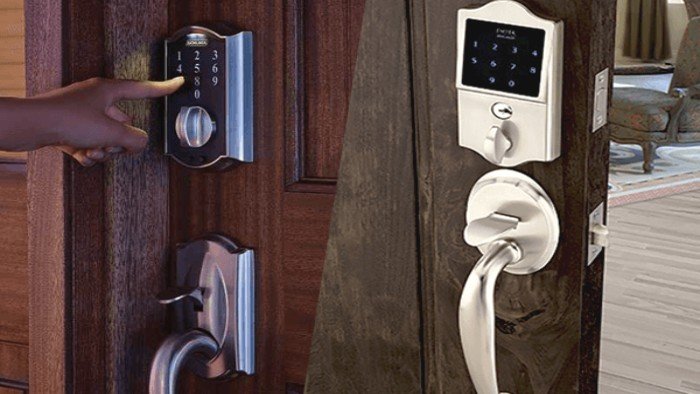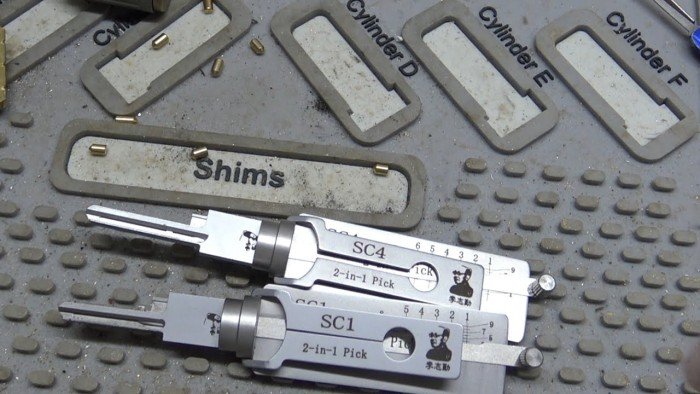The rapid advancement of technology has led to the integration of smart devices into various aspects of our lives, including our homes. Smart locks, which allow users to remotely control and monitor their door locks using smartphones or other connected devices, have gained popularity for their convenience and enhanced security features. However, as with any technology, smart locks are not immune to security vulnerabilities. This article delves into the potential risks associated with smart locks being hacked and discusses strategies to mitigate these risks.
Understanding Smart Locks
Smart locks offer a range of features, including remote unlocking, virtual keys, and integration with home automation systems. These locks can be controlled via dedicated mobile apps, voice assistants, or even biometric inputs like fingerprints. While these features enhance convenience and control, they also introduce potential vulnerabilities that hackers could exploit.
Can Smart Lock be Hacked?
Yes, smart locks can be vulnerable to hacking. Some of the reasons for hacking are mentioned below:
- Remote Access Vulnerabilities: One of the primary concerns with smart locks is the potential for unauthorized remote access. If a smart lock’s communication protocols are not properly secured, hackers may exploit weaknesses to gain control over the lock. This could lead to unauthorized entry into homes.
- Weak Passwords: Just like any online account, weak passwords can be a significant vulnerability. If a user employs an easily guessable password or fails to update it regularly, a hacker might be able to gain access to their smart lock.
- Bluetooth and Wi-Fi Exploits: Smart locks that rely on Bluetooth or Wi-Fi for communication may be susceptible to attacks if these wireless connections are not adequately protected. Attackers could attempt to intercept communication or launch man-in-the-middle attacks.
- Software Vulnerabilities: Smart locks often run on software that may have security vulnerabilities. If manufacturers do not regularly update and patch their devices, hackers could exploit these vulnerabilities to compromise the lock’s security.
- Physical Tampering: Some smart locks have physical components that could be manipulated or tampered with to bypass the lock. This might involve picking the lock, disabling the electronics, or manipulating the locking mechanism.
How Can You Protect Your Smart Lock?
Your smart lock can be protected from unauthorized access in the following ways:
Strong Authentication: Manufacturers should enforce strong password requirements and encourage users to set unique, complex passwords. Multi-factor authentication (MFA) can provide an extra layer of security.
Regular Updates: Manufacturers must release regular software updates and security patches to address any vulnerabilities that may be discovered post-launch.
Encryption: Implementing robust encryption for data transmission between the lock and the controlling device helps prevent interception and unauthorized access.
Physical Security Measures: To address physical tampering, manufacturers should design locks that are resistant to picking and tampering. Reinforcing the physical security of the lock mechanism is crucial.
Network Security: Users should secure their home Wi-Fi networks with strong passwords and encryption protocols. Keeping router firmware up to date is also essential.
Vendor Reputation: Choose smart locks from reputable manufacturers with a track record of security consciousness and commitment to ongoing updates.
Frequently Asked Questions (FAQs)
- Are smart locks easy to break into?
Smart locks can vary in terms of security and vulnerability, just like traditional mechanical locks. The perception that smart locks are easier to break into often stems from concerns about their digital nature and potential vulnerabilities in their technology. However, it’s important to note that not all smart locks are created equal, and some can actually offer higher levels of security than traditional locks when implemented properly.
- What are the Pros of smart locks?
- Smart locks allow you to lock and unlock your doors remotely using a smartphone app.
- With smart locks, you no longer need physical keys. This eliminates the risk of losing your keys or getting locked out of your home.
- Some smart locks come with built-in security features such as activity logs, tamper alerts, and notifications.
- Smart locks can be integrated into larger smart home ecosystems, allowing you to control locks alongside other devices like cameras, lights, and thermostats.
- You can grant temporary access to guests, contractors, or house sitters without providing them with physical keys.
- What are the Cons of smart locks?
- Like any connected device, smart locks can potentially be vulnerable to hacking or unauthorized access if not properly secured.
- Smart locks require power to function, typically through batteries.
- Just like any technology, smart locks can experience technical glitches or malfunctions.
- Smart locks can be more expensive upfront compared to traditional locks.
Conclusion
In the end, the decision to use a smart lock should be a well-informed one, taking into account both the convenience they offer and the potential security risks they pose. By being vigilant and proactive about security measures, we can make the most of the benefits of smart locks while minimizing the chances of falling victim to hacking attempts.
- Access Control Solutions for Remote Smart Lock Management - December 15, 2023
- Jimmy Proof Lock vs Deadbolt - September 30, 2023
- Level Lock vs August: Detailed Comparison - September 30, 2023


